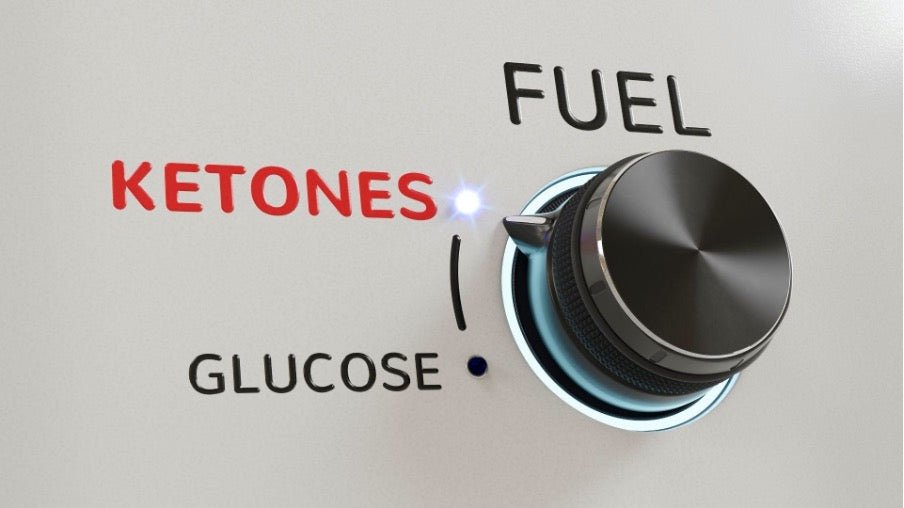
How to Reach Ketosis?
Gloria PalcichShare
Reaching ketosis is often regarded as one of the important goals while on a keto diet. But what is it? And how does one reach and maintain ketosis?
Here is what you need to know about the different ways you can start using ketones for energy and reach ketosis.
What is Ketosis?
Ketosis is a metabolic state that happens when the body doesn't have enough glucose (blood sugar) for energy, so it burns fat instead. This is called ketosis. When this happens, ketones are released into the bloodstream.
Ketones are made from fat and can be used as an alternative fuel source by cells in your body. And unlike glucose, they don't need insulin to enter cells.
How to Reach Ketosis?
Following are five effective ways to get into ketosis.
-
Limit your carb intake

The body’s primary source of fuel is carbs because they are metabolized faster. So once you limit your carb intake, your body doesn’t have any choice but to break down stored fat cells in the body for energy, therefore, reaching the state of ketosis.
You will need to limit your calories from carbs to an absolute minimum. Consuming about 20g of carbs per day will make sure that the body will switch to using ketones for fuel thus maintaining ketosis.
-
Intermittent fasting

Intermittent fasting is the practice of periodically abstaining from food for a certain period of time. Intermittent fasting is one of the best ways to reach ketosis and enhance the benefits of a keto diet.
The main idea behind intermittent fasting is that it forces the body to use up its stores of glucose and start breaking down stored fat cells for fuel which in turn pushes the body into ketosis.
-
Exercise

The body enters ketosis when there is a lack of glycogen (stored glucose) in the body. When glycogen stores are depleted, the liver converts fatty acids into ketones, which are then used as fuel by the body.
When you exercise the demand for energy goes up, so your body starts breaking down stored glycogen for energy. But when the intensity of your exercise is high the glycogen stores run out quicker and the body is forced to burn fat for energy, therefore, helping you reach ketosis.
-
Choose keto-friendly recipes and snacks
Finding and preparing low-carb and keto-friendly foods and recipes is key in reaching and staying in ketosis. The easiest way to start down the wrong path of keto is to not have easy food options for when you're hungry.
This is what you can do:
- Look for keto-friendly recipes
- Choose low-carb snacks such as Teff Crackers or Pork Rinds
-
Use MCT oils

MCT oils can promote significant increases in blood ketones that can help you reach ketosis faster. MCTs are able to get the body into ketosis quicker due to their fast absorption.
Unlike long-chain fatty acids, they are directly metabolized and used for energy by cells more easily. The richest sources of MCT oils include coconut and palm kernel oils.
How Long Does it Take to Reach Ketosis?
How fast you reach ketosis may depend on certain factors such as your age, body type, diet, and your daily activity level.
On average, for people who begin a keto diet, it can take a couple of days to burn through the body’s glycogen stores and approximately 1-2 weeks to reach ketosis.
Conclusion
Following these steps will help you reach ketosis. In addition, you'll be able to burn fat and achieve your health goals as well.
Prefer using a meal delivery company that does all the heavy lifting for you. Ketolibriyum’s meal packages will not only help you reach ketosis but the meals are also rich in healthy fats and nutrients to make sure that you are fueled the right way while you are on keto.
References
Paoli A, Bianco A, Grimaldi KA. The Ketogenic Diet and Sport: A Possible Marriage?. Exerc Sport Sci Rev. 2015;43(3):153-162.
Collier R. Intermittent fasting: the science of going without. CMAJ. 2013;185(9):E363-E364. doi:10.1503/cmaj.109-4451
Schönfeld P, Wojtczak L. Short- and medium-chain fatty acids in energy metabolism: the cellular perspective. J Lipid Res. 2016;57(6):943-954.
